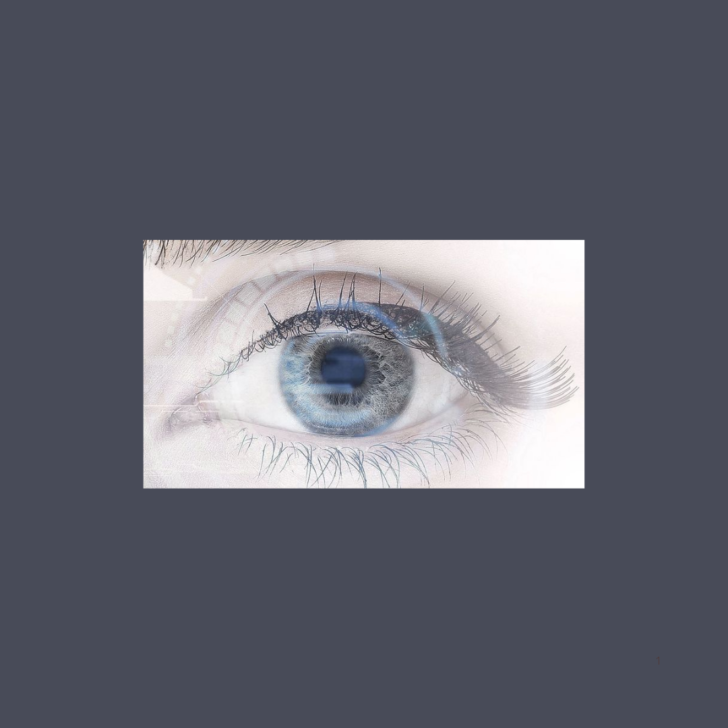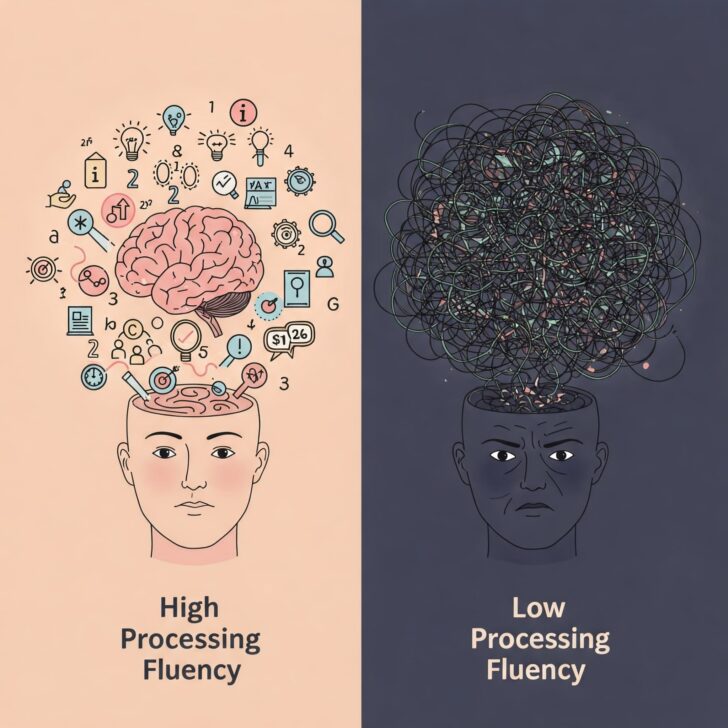
BLOG
2024年10月29日

まばたきの心理:その隠された意味を読み解く
私たちは、1日に何千回となくまばたきをしています。しかし、この無意識に行われる動作に、実は深い心理が隠されていることをご存知でしょうか?
やまひろさんの言葉にもあるように、「たまにまばたきを下から閉じる人、何者!?」と思わず気になってしまうように、まばたきは、その人の心理状態や相手への態度を反映する、重要なノンバーバルコミュニケーションの一つなのです。
本稿では、まばたきの心理について、行動心理学の観点から深く掘り下げていきます。
まばたきの基礎知識
まず、まばたきの基本的な知識をおさらいしましょう。
- 役割: まばたきは、眼球を保護するために涙を分泌し、乾燥や異物から目を守る役割を担っています。
- 頻度: 平均的には3~4秒に1回といわれていますが、個人差があり、年齢や性別、状況によっても変化します。
- 男女差: ホルモンの影響で、男性の方がまばたきの回数が多い傾向があります。
まばたきの回数と心理
まばたきの回数は、大きく分けて「多い」と「少ない」の2つのパターンに分けられます。それぞれの心理状態を見ていきましょう。
まばたきが多い時の心理
まばたきが多い場合は、以下の心理状態が考えられます。
- 緊張・不安: 人前で話したり、試験を受けたりするなど、緊張や不安を感じているときは、交感神経が優位になり、まばたきの回数が増加します。
- 嘘: 嘘をつくときは、罪悪感や緊張から、まばたきが増える傾向があります。
- 好意: 好きな人の前では、緊張やドキドキ感から、まばたきが多くなることがあります。
- ストレス: ストレスを感じているときも、まばたきが増えることがあります。
- 興奮: 嬉しいことや楽しいことがあったときなど、興奮状態にあるときも、まばたきが多くなることがあります。
- 疲労: 疲れているときも、まばたきの回数が増えることがあります。
- 身体的要因: アレルギーやドライアイなど、眼球に不快感がある場合も、まばたきが多くなります。
まばたきが少ない時の心理
まばたきが少ない場合は、以下の心理状態が考えられます。
- 集中: 仕事や勉強に集中しているときは、まばたきの回数が減ることがあります。
- 敵意・拒否: 相手の言動に反感や拒否感を抱いているときは、まばたきが少なくなることがあります。
- 退屈: 退屈しているときも、まばたきが少なくなることがあります。
- 優越感: 相手を見下しているときや、優越感を感じているときも、まばたきが少なくなることがあります。
- リラックス: リラックスしているときも、まばたきが少なくなることがあります。
このように、まばたきの回数は、その人の心理状態を反映する鏡のようなものです。しかし、まばたきが少ないからといって、必ずしもネガティブな感情を抱いているとは限りません。リラックスしている場合もあるため、他の表情や態度と合わせて総合的に判断することが重要です。
まばたきの種類と心理
まばたきの回数だけでなく、まばたきの種類にも心理が隠されています。
- 両目を同時に閉じる: これは一般的なまばたきで、特に特別な意味はありません。
- 片目をつむる(ウインク): 親しみや好意、共犯意識などを示す場合が多いですが、状況によっては挑発的な意味合いを持つこともあります。
- 目を大きく見開く: 驚きや恐怖、興味を示す場合が多いです。
- 目を細める: 不快感や疑い、警戒心などを示す場合が多いです。
- 上まぶたをゆっくりと閉じる: 色っぽさや挑発、退屈などを示す場合が多いです。
まばたきとコミュニケーション
まばたきは、言葉以外のコミュニケーション手段としても重要な役割を担っています。
- 会話のリズム: まばたきは、会話のリズムを整える役割も担っています。相手の話に同意したり、理解を示したりするときに、まばたきをすることで、スムーズなコミュニケーションを促すことができます。
- 感情の伝達: まばたきによって、喜びや悲しみ、怒りなどの感情を伝えることができます。例えば、悲しいときにまばたきをすると、涙が溢れやすくなります。
- 視線のコントロール: まばたきをすることで、視線を一時的に遮り、相手との距離感を調整することができます。
まばたきから相手を読み解く
まばたきの心理を理解することで、相手の心理状態やあなたへの態度を読み解くことができます。
- 商談: 相手のまばたきが多い場合は、緊張しているか、嘘をついている可能性があります。逆に、まばたきが少ない場合は、自信を持っているか、あなたに興味がない可能性があります。
- 恋愛: 好きな人のまばたきを観察することで、あなたへの気持ちを探ることができます。まばたきが多い場合は、あなたを意識している証拠かもしれません。
- 職場: 上司や同僚のまばたきを観察することで、その場の雰囲気や相手との関係性を把握することができます。
まばたきをコントロールする
まばたきは無意識に行われる動作ですが、意識的にコントロールすることも可能です。
- 印象アップ: まばたきの回数を意識することで、相手に与える印象をコントロールすることができます。例えば、プレゼンテーションの際には、まばたきの回数を減らすことで、自信を与え、聴衆の集中力を高めることができます。
- 緊張の緩和: 緊張しているときは、意識的にゆっくりとまばたきをすることで、リラックス効果を得ることができます。
- コミュニケーションの円滑化: 相手のまばたきに合わせることで、共感や親近感を示し、コミュニケーションを円滑にすることができます。
まとめ
まばたきは、単なる生理現象ではなく、複雑な心理状態やコミュニケーションを反映する重要なノンバーバルコミュニケーションです。まばたきの心理を理解することで、相手とのコミュニケーションを円滑にし、より良い人間関係を築くことができるでしょう。
参考文献
- アルダッシュ・K・アンダーソン (2021). 『ノンバーバル・コミュニケーション入門』 (杉田米行 訳). みすず書房.
- ジョー・ナヴァロ (2018). 『FBI捜査官が教える「しぐさ」の心理学』 (夏目大 訳). ダイヤモンド社.
注釈
- 本稿で述べているまばたきの心理は、一般的な傾向であり、すべての人に当てはまるわけではありません。
- まばたき以外にも、表情や仕草、声のトーンなど、様々なノンバーバルコミュニケーションが存在します。
- 相手の心理状態を正確に理解するためには、まばたきだけでなく、他のノンバーバルコミュニケーションと合わせて総合的に判断することが重要です。
The Psychology of Blinking: Decoding its Hidden Meanings
We blink thousands of times a day. But did you know that this unconscious action actually hides deep psychological implications?
As Yamahiro-san points out, "Who are those people who occasionally close their eyes from the bottom up!?" Indeed, blinking is a crucial form of nonverbal communication that reflects a person's psychological state and attitude towards others.
In this article, we will delve into the psychology of blinking from the perspective of behavioral psychology.
Blinking Basics
First, let's review the basics of blinking.
- Role: Blinking serves to protect the eyeball by secreting tears and protecting the eye from dryness and foreign objects.
- Frequency: On average, we blink once every 3 to 4 seconds, but this varies from person to person and can change depending on age, gender, and situation.
- Gender differences: Due to hormonal influences, men tend to blink more frequently than women.
Blink Frequency and Psychology
Blink frequency can be broadly divided into two patterns: "frequent" and "infrequent." Let's examine the psychological states associated with each.
Psychology of Frequent Blinking
Frequent blinking may suggest the following psychological states:
- Tension/Anxiety: When feeling tense or anxious, such as when speaking in public or taking an exam, the sympathetic nervous system becomes dominant, increasing blink frequency.
- Deception: When lying, feelings of guilt or nervousness can lead to increased blinking.
- Affection: In the presence of someone you like, nervousness and excitement can cause you to blink more frequently.
- Stress: Stress can also lead to increased blinking.
- Excitement: Blinking may increase when excited, such as when experiencing something joyful or pleasant.
- Fatigue: Fatigue can also increase blink frequency.
- Physical factors: Allergies, dry eyes, or other discomforts in the eyeball can also lead to more frequent blinking.
Psychology of Infrequent Blinking
Infrequent blinking may suggest the following psychological states:
- Concentration: When concentrating on work or study, blink frequency may decrease.
- Hostility/Rejection: When feeling aversion or rejection towards someone's words or actions, blinking may become less frequent.
- Boredom: Boredom can also lead to less frequent blinking.
- Sense of superiority: When looking down on someone or feeling a sense of superiority, blinking may decrease.
- Relaxation: Relaxation can also lead to less frequent blinking.
As you can see, blink frequency is like a mirror reflecting a person's psychological state. However, infrequent blinking does not necessarily indicate negative emotions. It could also signify relaxation. Therefore, it's crucial to consider other facial expressions and behaviors to make a comprehensive judgment.
Types of Blinks and Their Psychological Implications
In addition to frequency, the types of blinks also hold psychological meanings.
- Closing both eyes simultaneously: This is a typical blink with no particular meaning.
- Winking (closing one eye): This often indicates friendliness, affection, or complicity, but depending on the situation, it can also be provocative.
- Opening eyes wide: This often indicates surprise, fear, or interest.
- Narrowing eyes: This often indicates discomfort, suspicion, or vigilance.
- Slowly closing the upper eyelid: This often indicates seductiveness, provocation, or boredom.
Blinking and Communication
Blinking also plays an essential role as a means of nonverbal communication.
- Conversation rhythm: Blinking helps regulate the rhythm of conversation. Blinking when agreeing with or understanding the other person can facilitate smooth communication.
- Emotional expression: Blinking can convey emotions such as joy, sadness, and anger. For example, blinking when sad can make tears flow more easily.
- Gaze control: Blinking allows for temporary blocking of视线, helping to adjust the sense of distance with the other person.
Reading Others Through Blinking
Understanding the psychology of blinking allows you to interpret the other person's psychological state and attitude towards you.
- Business negotiations: If the other person blinks frequently, they may be nervous or lying. Conversely, infrequent blinking may indicate confidence or disinterest in you.
- Romance: Observing the blinks of someone you like can provide clues about their feelings towards you. Frequent blinking may be a sign that they are conscious of you.
- Workplace: Observing the blinking of your boss or colleagues can help you grasp the atmosphere and your relationship with them.
Controlling Blinking
Although blinking is an unconscious action, it can be consciously controlled.
- Improving impression: By being mindful of your blink frequency, you can control the impression you make on others. For example, during a presentation, reducing your blink frequency can project confidence and increase the audience's concentration.
- Relieving tension: When feeling tense, consciously blinking slowly can have a relaxing effect.
- Facilitating communication: Mirroring the other person's blinking can show empathy and rapport, facilitating smooth communication.
Conclusion
Blinking is not merely a physiological phenomenon; it is a crucial nonverbal communication tool reflecting complex psychological states and communication. Understanding the psychology of blinking can help you facilitate communication with others and build better relationships.
Recommend
-

2025年12月04日
3大AIモデルの比較(2025年12月最新版)
-

2025年09月30日
AI生成 交通事故時の簡易相談サイト
-

2025年08月07日
自転車の道路交通法に関して~知らなかったでは済まされない~
-

2025年07月22日
北海道産野菜ベジタボックス 2025年7月版
-

2025年07月17日
未来は、もう始まっている。あなたの仕事を加速させるAIツールを見つけよう!
-

2025年07月16日
WEBマーケティング
-

2025年05月16日
北海道産野菜詰め合わせセット ベジタボックスサブスク7月ごろより(継続サプライズ)
-

2025年04月29日
心理学の「実と虚について」処理の流暢性とは2025年度版













